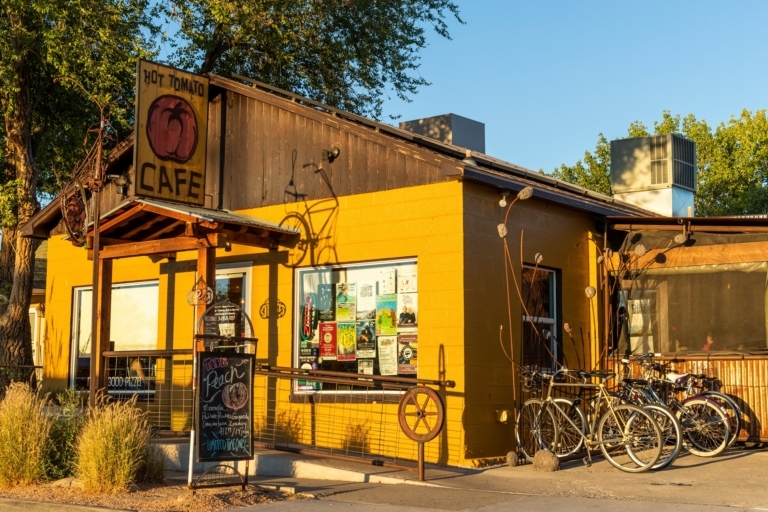What Are Public Lands?
Our public lands have tremendous value above and beyond resource extraction. Here’s why they’re worth protecting.
All United States lands, public and private, are the ancestral lands of Indigenous people and Tribal nations, most of whom were forcibly removed from their homes.
Today, there are 614 million acres (26.6 percent of the US) that are held in trust for the public and managed by the federal government, mostly through the Bureau of Land Management (BLM), the US Forest Service (USFS), the US Fish and Wildlife Service (USFWS) and the National Park Service (NPS)—these areas are called public lands.
What Are Public Lands Good For?
Approximately 14 percent of public lands have some measure of protection from development and resource extraction (wilderness areas, national monuments and national parks, for example). The remainder are open for business, and various industries–including logging, mining and drilling–are chomping at the bit. But these public lands have tremendous value beyond the extractive. Here are just a few of them.

Come for the national parks, forests and monuments—stay for the pizza. Founded by two cyclists in 2005, The Hot Tomato serves East Coast-style pizza to hungry hikers, bikers and straight up carb likers in Fruita, Colorado. Photo: Carl Zoch
Economy
Between 1970 and 2014, western rural counties with the highest share of federal lands had, on average, faster population, employment, personal income and per capita growth than those that had fewer public lands.

Biodiversity made this moment possible. Healthy watersheds support healthy fish and happy anglers. Sammy Elam on the release in the Provo River, Wasatch County, Utah. Photo: Andrew Burr
Biodiversity
Public lands facilitate and encourage biodiversity by allowing species to interact, adapt and thrive within their natural environments. Variability within and between species and ecosystems leads to greater stability for all life forms.

Tongass National Forest in southeastern Alaska has one of the largest carbon stores in the world. The trees, soil, bogs and peat in this temperate rainforest sequester carbon, which can mitigate the climate crisis. Photo: Lee House
Carbon Sinks
Leaving public lands in their natural state preserves their carbon absorption capabilities, which can help mitigate the climate crisis. Extractive industries not only create CO2 emissions, but also decrease carbon sequestration by interfering with natural systems.

No filter required. Jack Porter brought his own cup to a no-tellum in Las Pampa, Argentina. Photo: Bryan Gregson
Drinking Water
The water that comes out of most taps has taken a long journey, likely originating from or passing through public lands. An estimated 180 million Americans drink water from rivers and aquifers whose sources are on public lands.

The research ain’t sappy: For many folks, time spent in forests can lower stress and boost the immune system. Leah Evans thanks a therapist in the Monashee Mountains, British Columbia, Canada. Photo: Garrett Grove
Mental Health
A study at Chiba University in Japan found that forest therapy reduced cortisol levels (fight-or-flight stress hormones) by 12.4 percent and lowered heart rates by 5.8 percent. Natural “killer cell” activity (an immune function indicator) increased by 23 percent and was maintained for a month after test subjects returned to urban life.

Dawn Kaaxwaan Jackson harvests thimbleberries in Alaska’s Tongass National Forest. Citizens of her home community in Keex’ Kwaan depend on the bounty of local lands and waters to fill their pantries, freezers and bellies. Photo: Bethany Goodrich
Hunting, Fishing and Traditional Gathering
For thousands of years, Indigenous people have sustainably gathered wood and plants for food, medicine and other cultural needs on their ancestral lands. Today, public lands allow elk, deer, waterfowl and native trout to grow and thrive so all of us, our children and our children’s children will have game to hunt and fish to catch.

Sgwaayaans Young leans against a wasgo, or sea wolf, totem pole he carved in the community carving shed in Hydaburg, Alaska. For the Haida, Tlingit and Tsimshian people who live in this area, totem poles are a way to consecrate values, document histories, establish governance, give physical form to important stories and display crests. Photo: Bethany Goodrich
Cultural Heritage & Inclusion
Public lands protect Traditional Cultural Properties (TCPs), sacred sites and other places that are historically significant and used in the present day, fostering a shared sense of identity and broadening the American narrative.

Large or small, parks on public lands are ours to enjoy, protect and share with friends. Leidig Meadow, Yosemite National Park. Photo: Drew Smith
Community
Public lands are not only large, remote places. They are in our cities and neighborhoods in the form of national historic sites and national recreation areas. Plus, state and local parks and preserves amount to almost 200 million acres in the US. Along with neighborhood parks and playgrounds, they are important community assets that provide gathering spaces and outdoor access, particularly for those who don’t have the means to visit our national parks.
Protect Lands and Waters
Conserving lands and waters is essential for maintaining biodiversity, providing habitat for endangered species and fighting climate change. Get involved and help protect the places that protect us.

